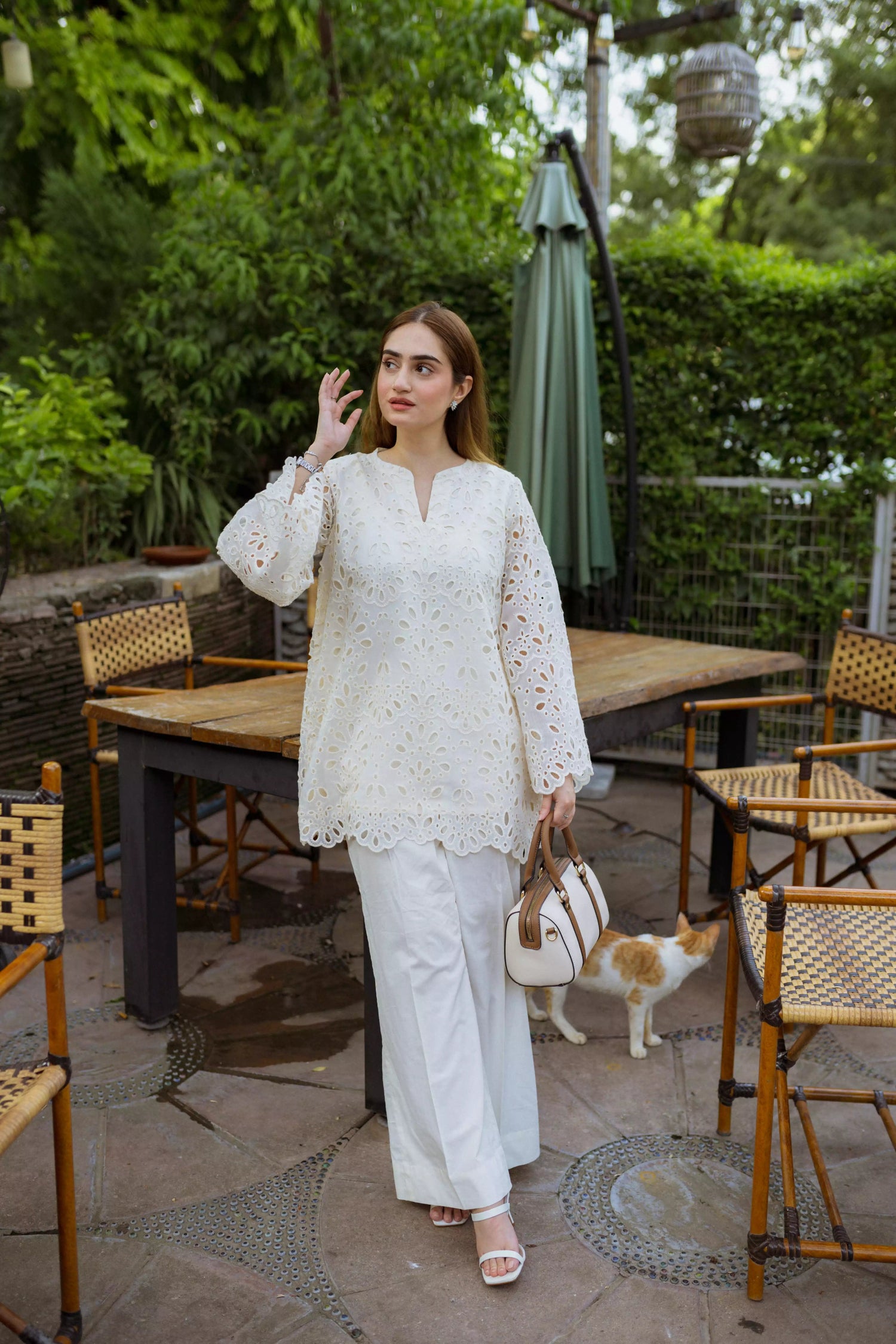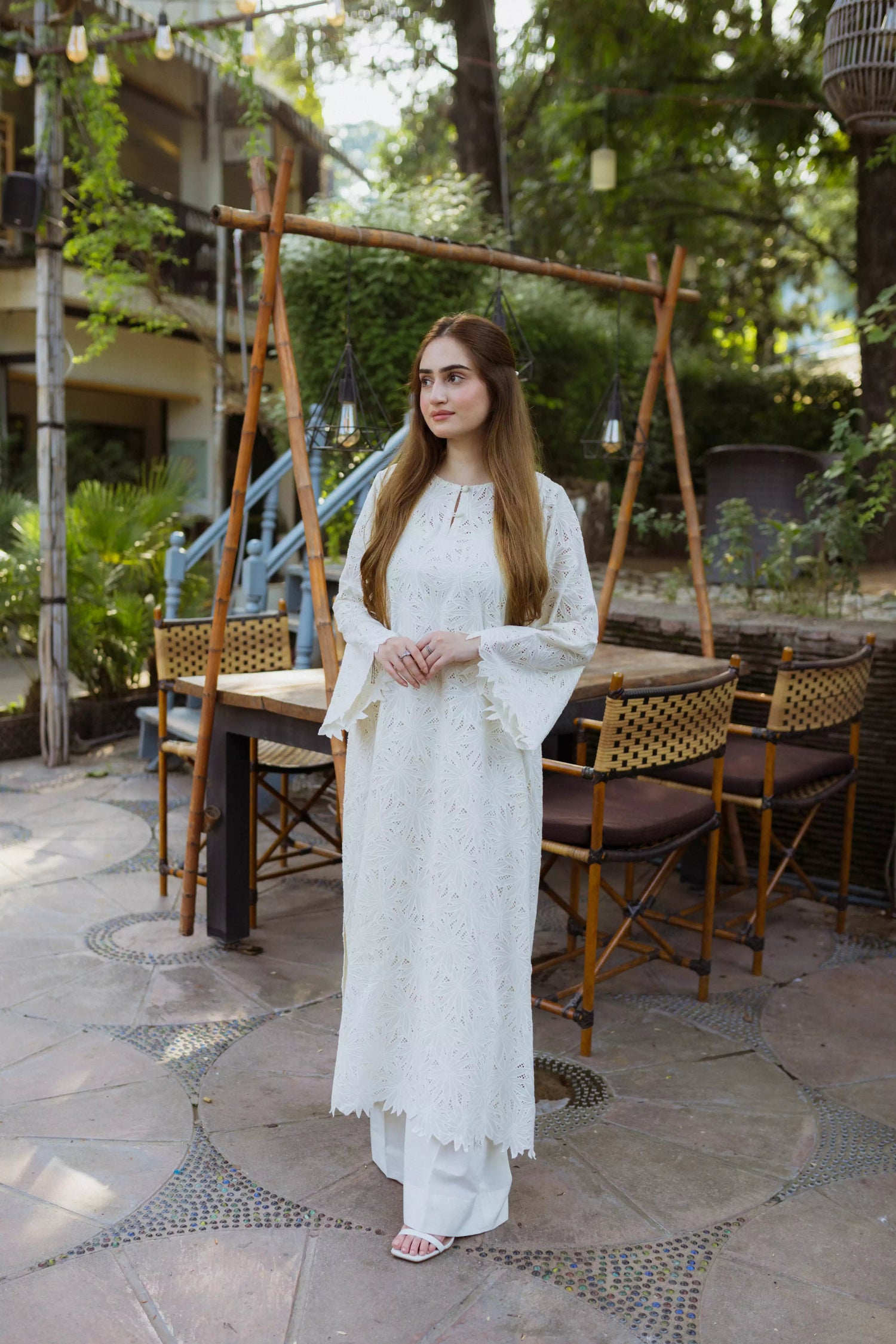Step into the world of exquisite craftsmanship as we take you on a journey tracing the evolution of Chikankari in the fashion industry. From its origins in the court of the Mughal emperors to becoming a timeless art form, Chikankari has captivated fashion enthusiasts for centuries. This traditional embroidery technique, known for its delicate patterns and intricate designs, has undergone a remarkable transformation over the years. Today, it continues to be a symbol of elegance and grace, adorning the wardrobes of fashion connoisseurs around the globe.
Origins of Chikankari
Chikankari, which translates to "embroidery" in Persian, has its roots deeply embedded in the cultural heritage of the subcontinent. The exact origins of Chikankari are shrouded in mystery, but it is believed to have been influenced by Persian and Mughal embroidery techniques. The craft was initially practiced by skilled artisans, who meticulously handcrafted each Chikankari masterpiece.

Chikankari is characterized by its intricate white threadwork on lightweight fabrics like muslin, chiffon, and organza. The embroidery is done using a variety of stitches, including the famous shadow work, which creates an illusion of shadows and highlights. The motifs used in Chikankari range from floral patterns to geometric designs, each representing different elements of nature and culture.
Chikankari in the Mughal Era
During the reign of the Mughal emperors in the 16th and 17th centuries, Chikankari gained recognition and patronage. The emperors and their queens were fond of adorning themselves in intricately embroidered Chikankari garments. The art form flourished in the royal courts, where skilled artisans were commissioned to create exquisite pieces for the nobility. Chikankari became synonymous with luxury and elegance, reflecting the opulence of the Mughal era.
The Mughal influence on Chikankari can be seen in the motifs and designs used. The embroidery often featured motifs like peacocks, flowers, and vines, which were inspired by the lush gardens and wildlife of the Mughal empire. The garments were embellished with precious stones and gold and silver threads, adding to their grandeur.
Chikankari during the British Raj
The arrival of the British in subcontinent in the 18th century brought significant changes to the fashion landscape, including Chikankari. The British Raj introduced new fabrics and styles, which influenced the way Chikankari was practiced and appreciated. The delicate threadwork of Chikankari found a new canvas in fabrics like silk and satin, giving it a more refined and luxurious look.

During this period, Chikankari also started incorporating Western influences, such as Victorian-era silhouettes and motifs. The fusion of embroidery techniques with Western aesthetics created a unique and captivating style. Chikankari garments became popular among the British elite, who embraced them as a symbol of elegance and sophistication.
Revival of Chikankari in the 20th century
The 20th century marked a period of revival for Chikankari, which had started to decline in popularity. Efforts were made to preserve and promote this traditional craft, recognizing its cultural and historical significance. Artisans and designers began experimenting with new techniques and designs, breathing new life into Chikankari.
One of the key figures in the revival of Chikankari was Kamaladevi Chattopadhyay, a social reformer and cultural activist. She played a crucial role in establishing the Handicrafts Board, which aimed to promote and support traditional crafts like Chikankari. Chattopadhyay's efforts helped Chikankari regain its rightful place in the world of fashion.
Contemporary Chikankari in the fashion industry
In the modern world, Chikankari has evolved to cater to the changing tastes and preferences of fashion enthusiasts. Designers are experimenting with new colors, fabrics, and silhouettes to give Chikankari a contemporary twist. The delicate threadwork is now combined with bold prints, sequins, and even metallic accents, creating a fusion of tradition and modernity.
Chikankari has also expanded beyond traditional garments like sarees and kurtas. It is now seen on a variety of western wear, including tops, dresses, and even accessories like bags and shoes. The versatility of Chikankari has made it a favorite among fashion-forward individuals who appreciate its timeless beauty.
Techniques and motifs in Chikankari
Chikankari is known for its intricate stitches and delicate motifs. The embroidery is done using a variety of stitches, each with its own unique charm. Some of the popular stitches used in Chikankari include:

- Shadow work: This stitch creates a shadow-like effect by using a combination of backstitch and herringbone stitch. It is often used to create floral and leaf motifs.
- Phanda: This stitch involves creating small, raised knots on the fabric. It is used to create intricate patterns and textures.
- Murri: This stitch is characterized by small, bead-like knots created on the fabric. It adds a three-dimensional effect to the embroidery.
The motifs in Chikankari are inspired by nature, mythology, and cultural symbols. Some of the common motifs include paisleys, flowers, elephants, and peacocks. Each motif holds a symbolic meaning and adds to the overall beauty of the Chikankari creation.
How to style Chikankari outfits
Styling Chikankari outfits can be a delightful experience, as they offer endless possibilities. Here are some tips to help you create a fashionable look with Chikankari:
- Pair a Chikankari kurta with palazzo pants or a flowy skirt for a bohemian-inspired look. Add some chunky silver jewelry to complete the ensemble.
- For a more formal occasion, opt for a Chikankari saree or anarkali suit. Pair it with statement jewelry and heels for an elegant and sophisticated look.
- Experiment with layering by wearing a Chikankari jacket or shrug over a simple dress or jeans. This adds a touch of ethnic charm to your outfit.
- Mix and match Chikankari separates with western wear to create a fusion look. For example, pair a Chikankari top with jeans or a Chikankari skirt with a plain white shirt.
Conclusion
Chikankari continues to enchant fashion enthusiasts around the world with its timeless beauty and exquisite craftsmanship. From its origins in the Mughal era to its revival in the 20th century, Chikankari has evolved and adapted to changing fashion trends while maintaining its essence. This traditional embroidery technique has transcended borders and cultures, captivating people from all walks of life.
Whether you're a lover of traditional craftsmanship or simply curious about the evolution of fashion, Chikankari offers a captivating story. Its delicate threadwork and intricate motifs tell tales of a rich cultural heritage and the skilled hands that bring them to life. So, embrace the beauty and artistry of Chikankari, and let it add grace and elegance to your wardrobe.




























